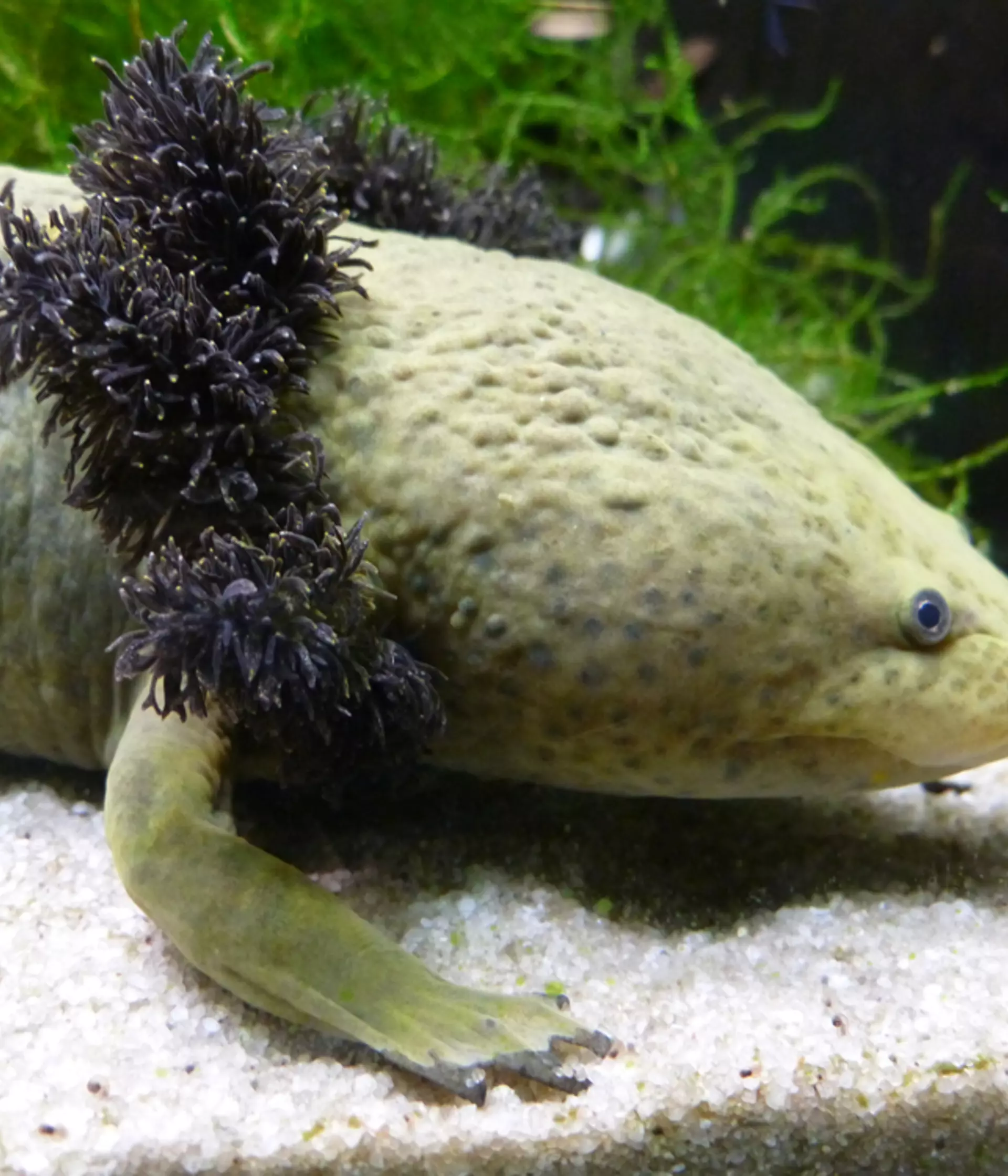Area of zoo
Enclosure status
Open
IUCN status
Critically Endangered
Scientific name
Ambystoma dumerilii
Order
Caudata
Type
Amphibians
Family
Ambystomatidae
Region
Mexico
Habitat
Lake Patzcuaro in Mexico
Lake Patzcuaro salamander facts
- This species is endemic to Lake Pátzcuaro in Mexico and is also called the Dumeril’s salamander. For the past 150 years, the nuns in a convent close to lake have been sustainably raising the rare salamanders. The amphibians are a crucial ingredient in a mysterious medicine the convent makes that is believed to cure coughs and asthma. The nuns are active partners in the fight to save these salamanders.
- This species does not metamorphose and lives permanently in water. They are neotenic, which means that they retain features of the juveniles (gills) into adulthood.
- Our keepers and vets lead in the development and validation of treatments for amphibian chytridiomycosis in this species.
We no longer keep this species at the Zoo
Loading...
What do Lake Patzcuaro Salamanders eat?
Aquatic invertebrates and small fish.
Lake Patzcuaro Salamander threats
Pollution of the lake that the species inhabits is the major threat to its survival. Predatory fish have been introduced into the lake, which might be a major problem for this species. The water level has dropped substantially, and consequently the water temperature has increased.
Lake Patzcuaro Salamander conservation
The species is maintained within four local captive breeding colonies in Mexico and also within several European and American Zoos. These populations, particularly those in Mexico, have conservation relevance and also provide opportunity to study the species behaviour and biology in order to inform conservation planning.
